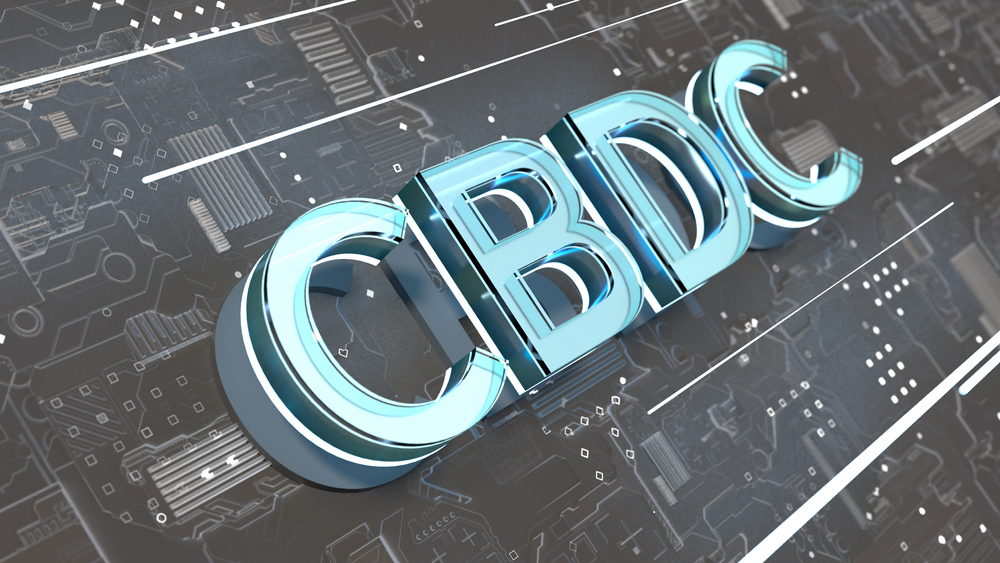The Treasury and the Bank of England are consulting on a potential digital pound, or central bank digital currency (CBDC). The consultation is being launched because both HM Treasury and the Bank want to ensure that, in the future, the public will have access to ‘safe money’ that is convenient to use. People’s everyday lives are becoming more digital, and the new digital coin could also support private sector innovation.
The digital pound would be issued by the Bank of England and could be used by households and businesses for everyday payments in-store and online and would be interchangeable with cash and bank deposits, complementing cash.
At this present time no decision has been made to introduce a digital pound, but The Bank of England will now as they say, ‘take forward further research and development work’. The public are being invited to give their views on the scheme to be taken forward.
The consultation is open for comments until 7 June 2023. After that the coin will reach ‘design phase’ which will look at the technology and policy requirements so that the development can be accelerated if a decision is taken to build it.
According to a press release on the website of the Bank Of EngLand the digital pound would replicate the role of cash in a digital world, which would mean that £10 of a digital pound would always be worth the same as £10 of cash.
As the coin will be issued by the Bank of England itself, it will be subject to privacy and data protection and accoding to the Bank of England neither the Government nor the Bank would have access to personal data. Holders would also experience the same level of privacy as a bank account. The digital pound would be accessed through digital wallets offered to consumers by the private sector through smartphones or smartcards, and would be intended for online and in-store payments, rather than savings, with no interest paid on holdings. If the currency would indeed be issued, there would be initial restrictions on how much an individual or businesses could hold.
According to the Bank of England the needs of vulnerable people are being considered in the digital pound design process ensuring that it would be simple and straightforward to use and understood and trusted by the public as a form of money.
Unlike cryptoassets and stablecoins, the digital pound would be issued by the Bank and not the private sector. This would mean that it would have intrinsic value and not be volatile, unlike (unbacked) cryptoassets as there would be a central authority to back it.
But why do we actually need a digital pound if payments are already mostly digital to begin with?
The most obvious and immediate benefit of a CBDC, in the form of a ‘core ledger’ which is a resilient and secure technology platform, is a faster, cheaper, and more efficient payment system, both domestically and internationally. It would reduce the costs of making, distributing, and safeguarding physical money. These gains could deliver greater productivity in an economy, which is a fundamental aspect of economic development.
But will such an implementation only be possitive? What exactly are the drawbacks of such a coin?
The critical point is that CBDCs could become a mechanism for all kinds of levels of central (government) control, which might be hard to imagine for anyone who has grown up in the free world. The problem with a cash-less digital currency is, that you cannot withdraw your digital tokens and hold them under the mattress, and eventually there might not be an option for physical cash in a country at all. This would give central banks greater flexibility to implement negative interest rates, and in doing so, people are then encouraged to use the money or lose the money, increasing consumer spending.
The Chinese Communist Party is currently already developing a Central Bank Digital Currency that will allow the government to surveil, and control its citizens’ behavior as part of its larger social credit system.
Under China’s nascent social credit system, citizens are given a credit score based on their online and offline behavior. It rewards ‘good’ behavior like spending time with the disabled or elderly and punishes ‘bad’ behavior like protesting against the government or spending too much time on playing videogames.
But when ‘trust’ is broken, restrictions are placed, which means citizens who commit even a minor non-compliance can be blacklisted from traveling, going to restaurants, watching a movie, buying insurance, or even renting, or buying a place to live. No, this is not an episode of the Netflix series Black mirror, but apparently this is already happening to over 30 million citizens, according to Chinese State-run media.
With the new big data-backed Central Bank Digital Currency and Electronic Payments system, the CCP could have one more tool at its disposal for monitoring and controlling citizen behavior.
Alex Mann, Partner at Concentric, the pan-European VC, who heads up the firm’s bitcoin focused fund, Timechain, shares this view and voices his critical views on the subject of a British CBDC, he commented:
“CBDCs are an affront to the proud tradition of individual liberty enshrined in the British constitution since the Magna Carta. The pound is already digital and as such the only purpose of a CBDC is to increase control and surveillance of the population. A CBDC, owing to its programmatic nature will inevitably be combined with a ‘social credit score’, CCP style, to ‘encourage’ behaviours the political regime of the day think desirable. When money is limited in how and on what it can be spent, it ceases to be money and is more akin to a coupon.
In stark contrast to a CBDC is the world’s only decentralised, fair and open monetary protocol – Bitcoin. If the British government is serious about innovating its way out of the debt ridden mess it currently and inescapably finds itself in, it should embrace innovation once more and embrace bitcoin. Bitcoin is an open and digital monetary protocol whose architecture is inherently more performant, adaptable and capable than any CBDC can ever be – by definition. Owing to its open source and permissionless nature, it is free for the private sector to innovate on – just like the internet. In fact, it is instructive to think of Bitcoin as the internet of value, a means of communicating value securely and at the speed of light just as the internet allows us to communicate information at the speed of light.
Bitcoin is inevitable. It will be and already is adopted by free peoples all over this planet. Those nations who adopt it will be at the forefront of prosperity in the 21st century, whilst those who look to restrict and curtail their populations via CBDC will fade into insignificance and despair. BTC, not CBDC.”
The Governor of the Bank of England, Andrew Bailey, said:




